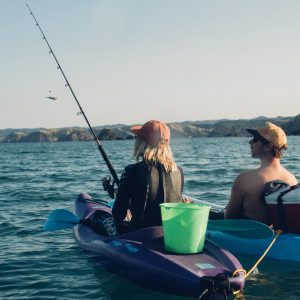Snapper is the species most often targeted by recreational anglers in New Zealand. In 2012 nationwide amateur harvest of snapper was estimated to be 4811 tonnes. This is more than the combined harvest of nine other popular species. Clearly, snapper is a resilient species, but stock levels are below where they should be and fishing pressure is too high.
LegaSea is encouraging recreational fishers to learn new techniques to decrease the number of small fish caught, to avoid gut hooking and ensure a high survival rate for released fish. We can make changes so the fishery rebuilds to an abundant level in our lifetime.
If fishing for snapper recreational fishers can employ the LegaSea Fish Handling Guide (under development). It incorporates some best practice techniques, including the following:
- Avoid catching small fish
- Move away from areas holding large numbers of small fish
- Use soft baits or jigs that tend to target larger fish, with a high proportion lip hooked
- When bait fishing use big baits on large hooks, 7/0 or 8/0s
- Use hooks with a wire appendage designed to reduce the capture and gut hooking of small fish
- Use circle hooks
- Fish actively, by keeping in touch with your bait or jig to avoid gut hooking
- If planning to release fish, keep angling time to a minimum
- Release fish in the water to reduce air time and stress on the fish
- If a fish must be removed from the water prior to release use a rubber net and place the fish on a wet, cool surface. Rubber nets will hold the fish with minimal damage to their eyes and skin
- Learn about, and use, new tools that quickly return fish to a comfortable depth and help avoid predators. Useful tools are release weights and weighted fish grips
- Quickly kill and chill in ice or slurry any fish being kept for eating
- Use the www.FreeFishHeads.co.nz service to share unwanted heads and frames.





